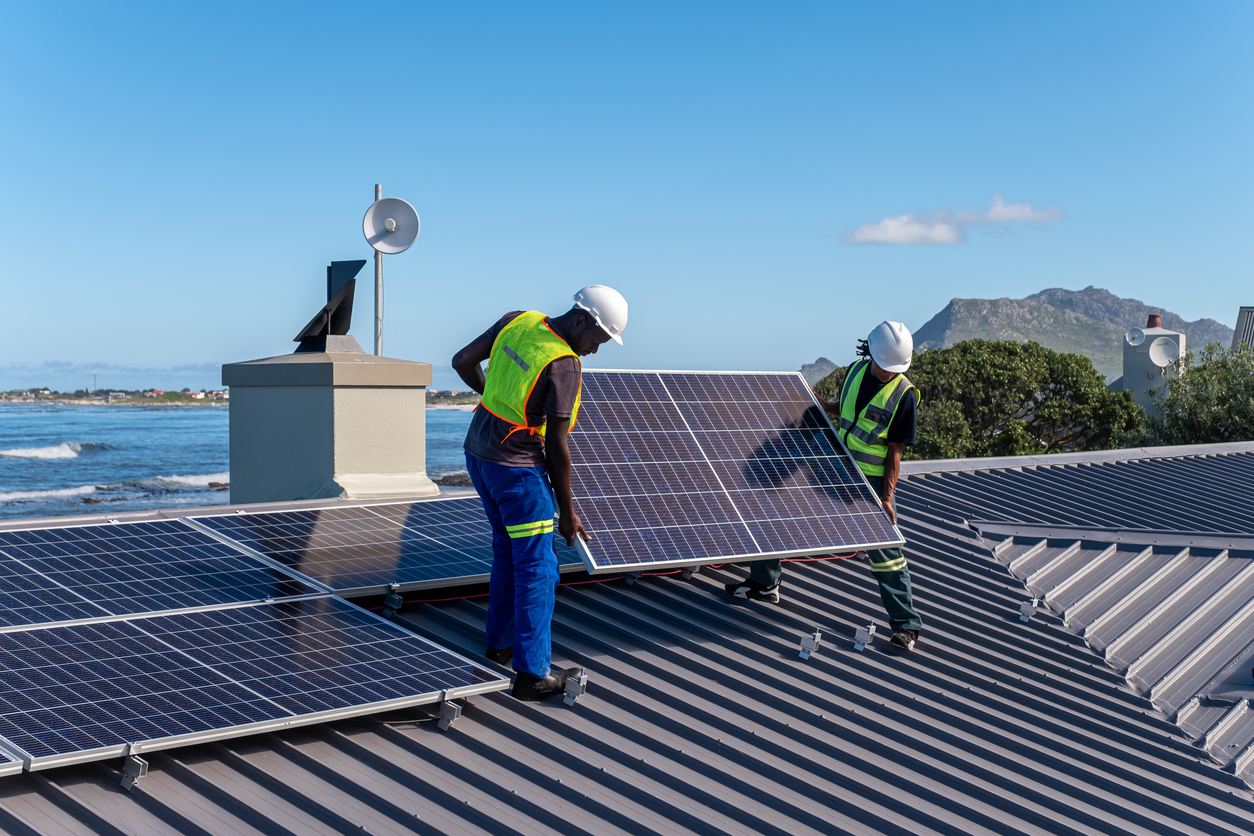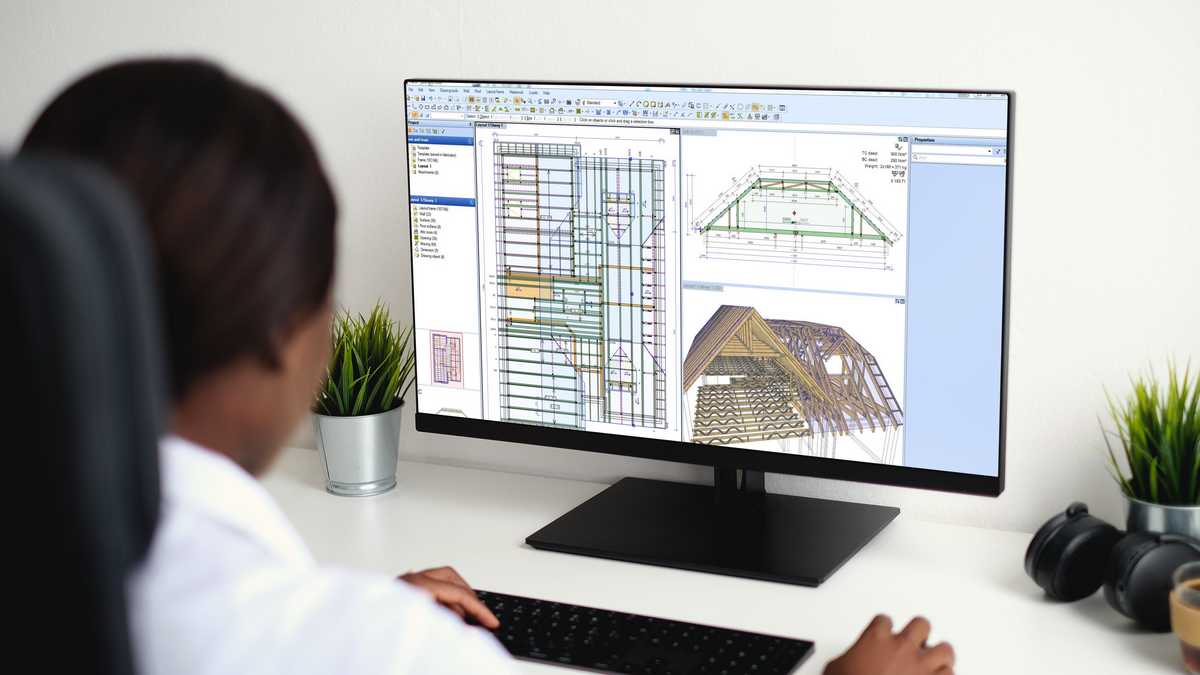How are evolving legislations going to impact our work in the near future? Ask Mike Newham, our Technical Executive, he helped write them.

Sustainable construction and renewable energy are gaining nationwide traction at a steady pace. But what’s it going to take to reach our full potential?
Alongside my MiTek duties, I’ve been working closely with the Technical Committees of the South African Bureau of Standards, the National Home Builders Registration Council (NHBRC), and the Institute for Timber Construction SA (ITC-SA).
Together, we’ve been trying to set the standards for the near future.
Truth is, South Africa has a strong regulatory environment. The National Building Regulations are robust enough to provide guidance to homebuilders for the safe delivery of homes and to support the growing commercial appetite for rooftop solar panels.
However, in many regions, unfortunately the resources needed to enforce the rules simply aren’t there.
Building work that goes uninspected by a competent engineer runs into problems, usually within 10-15 years. Out-of-plumb structures buckle, timber creeps in the hot climate; plenty of these buildings are triumphs of hope, not engineering. And when it comes to renewables, adding today’s solar technology on top of a compromised structure is not advisable.
This is nobody’s fault, it’s a situation we’ve inherited. The will to improve is there, we are often approached to inspect existing properties ourselves in accordance with published regulations, but when the cost of remedial works becomes clear, the inspection requests stop. So, what’s the solution?

Creating an internal best practice culture
Local authorities, architects, and asset owners need to go right back to the beginning. Whenever a new building is proposed, the owners must ensure their partners, and the tools they use, follow the correct procedures, and are fully compliant with the published rules and regulations.
Educating and ensuring compliance of these stakeholders has been a cornerstone of the NHBRC and ITC-SA’s work.
At MiTek, we’re providing our own piece of the puzzle. I believe we’re unique in the way we guide clients through the design process; the appointment of competent persons, certification of designs to SA Standards, helping with quality control in the manufacturing process, and inspection and signing off a finished structure.
It’s all in the name of compliance, and it speaks to that strong regulatory environment I mentioned. South African standards are some of the world’s best, but we need to educate people on the requirements, how to use them and apply them.
We do that through our products and the way we work. Our PAMIR software is kept constantly updated in line with new SANS regulations, giving our customers confidence in compliant design. MiTek roof trusses come with all the information stakeholders need to satisfy the South African Design Requirements.
Further to this, our designs are backed by $10 million in professional indemnity insurance, which hasn’t been claimed against in over 20 years.
For now, it’s not possible to do much about unsafe ad hoc structures going up in rural areas. This is a function of the Local Authorities, who do not have the necessary staff or expertise to enforce the regulations. What we can do is proactively and vocally champion best practice among our commercial and residential clients, and educate architects and engineers on the specifics when checking and approving the designs…

Working with the compliance champions
I’m a member of the ITC’s Timber Engineering Advisory Committee and chair of the South African Bureau of Standards Technical Subcommittee SANS TC98 / SC04 Timber Design. In that capacity, I’ve helped develop a lot of recent industry guidance, including rewriting SANS 10163-1 The Timber Design Code (Limit State Design) together with other industry specialists. I’m also a member of other committees such as SANS 10400, where we have been part of working groups for Part L (Roof Structures) and T (Fire Protection)
That means finding myself in detailed conversation with a great many interested parties. Areas like the new wind and live load requirements get highlighted and discussed in detail. But I’m not solely approaching things from a regulator’s perspective. I’ve worked at MiTek for 35 years; I have a great deal of empathy for those on the frontlines, taking a practical viewpoint as far as possible, but still maintaining legal and code requirements.
There are a lot of tensions in the market, especially in the current economic climate. Price is a big one. The inspections for everything from foundations, walls, structure, and concrete to plumbing and electrics can mount up. The temptation to cut corners is compelling, especially if people see no real consequences for bending or breaking the rules, and enforcement in some sectors is lacking.
We need to be clear in demonstrating that those consequences are fast approaching. People want to reap the benefits of tomorrow’s technologies, but they can’t do that with yesterday’s building standards.
Technology is the future, and for those wishing to embrace these technologies, I say get your property thoroughly inspected by a competent engineer first. There are even regulations which require you to do so on a biannual basis and those of us carrying construction forward must commit to the highest compliance standards in our methods, materials, and tools. We cannot afford to let standards slip and our reward will be a thriving, futureproof economy.
